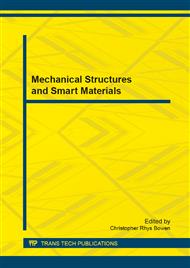p.352
p.357
p.361
p.366
p.370
p.374
p.378
p.385
p.389
Study of Dynamic Characteristics about Controllable Vane Damp
Abstract:
The characteristic of controllable vane damp is about the relationship between choke opening and damp parameter of proportional flow control valve, the relationship between the input current of electromagnet and controllable damp parameter is available after knowing the characteristics of electromagnet. This is the basic of control system design and the central dynamic characteristics of vane damp. The structure of vane damp is analyzed and the flow model is established, to provide the theoretical guidance with the design, analysis and improvement of vane damp, a simple calculating and accurate analytical method is proposed.
Info:
Periodical:
Pages:
370-373
Citation:
Online since:
January 2014
Authors:
Price:
Сopyright:
© 2014 Trans Tech Publications Ltd. All Rights Reserved
Share:
Citation:


